Create a liveable and healthy environment for urban dwellers, ensuring that a city can feed itself sustainably. That's the premise of the Urban Greenhouse Challenge, the second edition of which ended in August with the announcement of the winners. We spoke with the three winners, Team Bagua, Team KAS and TeAMSpirit about their journey through the challenge of designing an urban greenhouse in Dongguan, China.
Chinese symbolism
Gabriel Malaquin and Olivia Manzart are two of the members of Team Bagua, which took first place in the challenge. "We wanted to value China’s agricultural history and culture. We need to reinvent agriculture to have a lower environmental impact and Dao inspired us to take the strengths of traditional agriculture and merge with innovation and technology. Dao represents the importance of flow and flexibility and we think this is key to finding local solutions to urban farming", they describe the inspiration behind their concept.
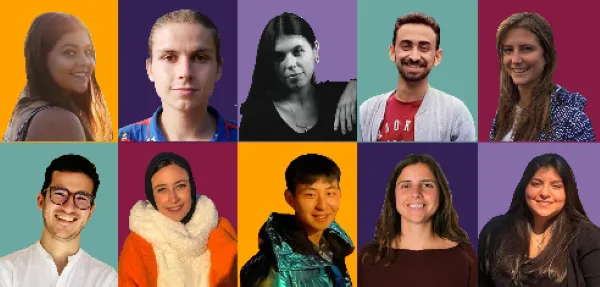
Team Bagua
"What else than a popular Chinese symbol to represent what we want to be one of the next wonders of Dongguan? When we think of any Chinese symbol, we think of Bagua. The symbol is an important precept of Taoism. Composed of 8 different earthly and godly elements to showcase duality, and represents the importance of flow and flexibility.
"When we learnt more about the symbol and what it meant, we found it incredibly close to what we wanted to create. From our desire to both use technology and traditional techniques, to the need to create circularity of energy and wastes. We created our project following what the symbol meant, hence the name Bagua."
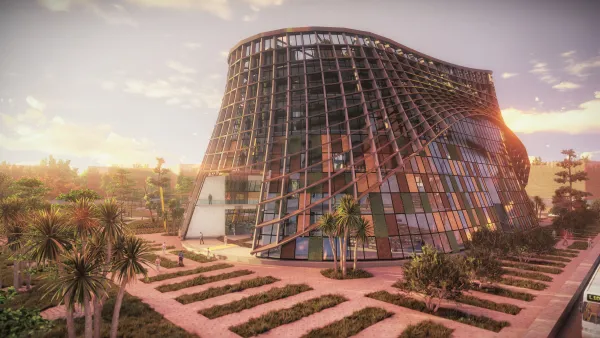
Team Bagua concept art
Third-place winners TeAMSpirit also took inspiration from Chinese mythology, although in their case the design came before the symbolism. Their Turtle design surely catches the eye, but they didn't come up with a turtle at first, explains team member Annie Berendsen. "Initially, we started off with the different functions we had in mind: public space, crop production and research. This came with an open ground floor, a big dome and a cubical. After the first design phase, we decided to 3D-print our building. When we began exhibiting our model, we repeatedly received comments that it resembled a turtle. The team really didn’t know what to think of this at first, but luckily our two Chinese members explained its symbology within Chinese mythology, and we realized just how relevant the turtle was to our concept. They explained that it represents wisdom, longevity and a long life, which perfectly encapsulated what we strived for with our resilient greenhouse. So that’s how the turtle found us!"
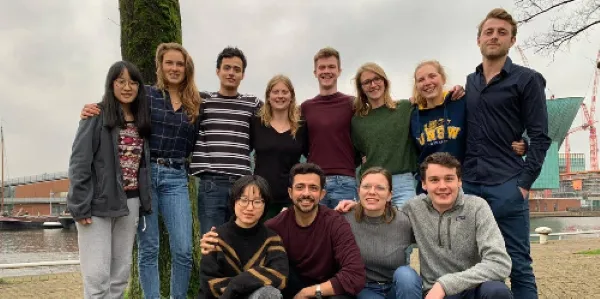
TeAMSpirit
Circularity
An important factor in Team Bagua's design was circularity. "Fertilizer inputs and leachates are key environmental issues in current agriculture and our solution was to produce all nutrient requirements of the crops onsite", Gabriel and Olivia explain. "Through using local agricultural and household organic waste we transform it into high quality substrate and nutrient solution using a biodigester. Our greenhouse design maximizes the use of sunlight to grow crops to reduce the need for nonrenewable energy to run LED lighting. Using new solar shade panels and a biodigester, Bagua can produce a significant proportion of the energy needs of the building."
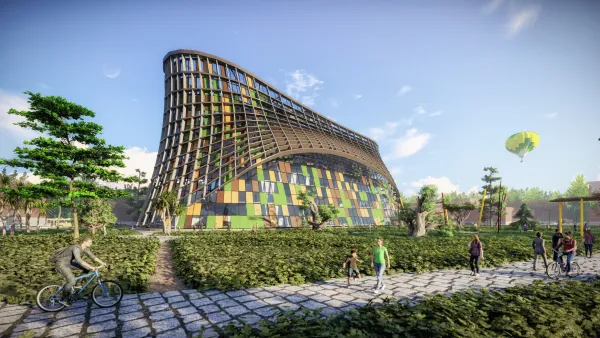
Team Bagua concept art
From the architectural side, they proposed the use of materials that met a specific criteria that helped guarantee circularity in the building. "For example, we wanted the materials to be locally produced. The materials also had to be lightweight and highly resistant in order to minimize the amount of material and to reduce the foundation needed to support the building."
Architectural challenges
Speaking of architecture, combining food production with a community center of sorts comes with a number of challenges. For Team Bagua, the main challenge was to design a project that combined efficiently the production of quality food with spaces for social interaction and learning. "In addition, using local resources and materials, and making it a low environmental impact building was also a large challenge", Gabriel and Olivia say. "Having Dongguan (China) as the location of the project, we needed to work in a geographical and cultural environment very different from where most of the team are from. In addition we were a very diverse group of people, which reinforced our main concept: Bagua, the Taoist philosophy of adapting. With the project we sought not only to adapt to the neighborhoods and local areas, but also to adjust to their different activities and needs. For this reason we proposed a flexible building with multi-purpose areas that could evolve over time or adapt to the new use that the city requires."
Team KAS, runners-up in the challenge, put emphasis on two main things in their design: uniqueness and profitability. "Of course, sustainability and circularity are considered and incorporated as the bases, but we really wanted to create something feasible and realistic. The given space for the indoor food production system was limited; therefore, it was a natural choice for us to incorporate indoor farming production systems such as hydroponics and aeroponics", Kyungchun Kim tells us on behalf of the team. In the beginning, they were considering other choices such as herbs, medicinal plants, and microgreens. "However, according to our calculation, these choices weren’t even enough to break-even our initial investment in a span of 10 years." So, after a series of meetings, they finally came up with alternative options, which were high-value crops such as ginseng and dragon fruit.
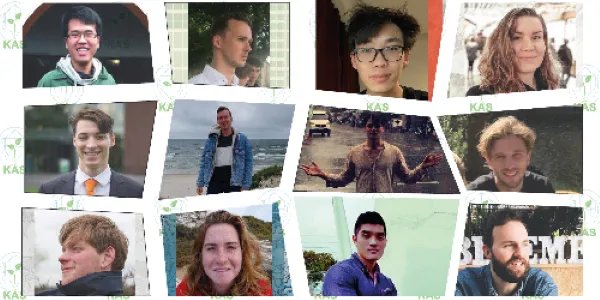
Team KAS
Because the challenge site was separated into two big areas, which were the construction site and the basic farmland, the total area of the challenge was big with about 30,000 m2, but the majority was the basic farmland, which they were only allowed to build any construction in less than 5% of the land. "The basic farmland was a huge opportunity to miss out on if we didn’t cultivate anything on it", Kyungchun says. "Therefore, in order to maximize the total profit (by cultivating on the basic farmland), we lowered the building height (in order to prevent the sunlight blockage by the building) and implemented the cross cultivation system to ensure a yearlong production. We also invented a foldable greenhouse that can be deployed anywhere in the basic farmland, to protect our crops from the harsh environment of the Dongguan area."
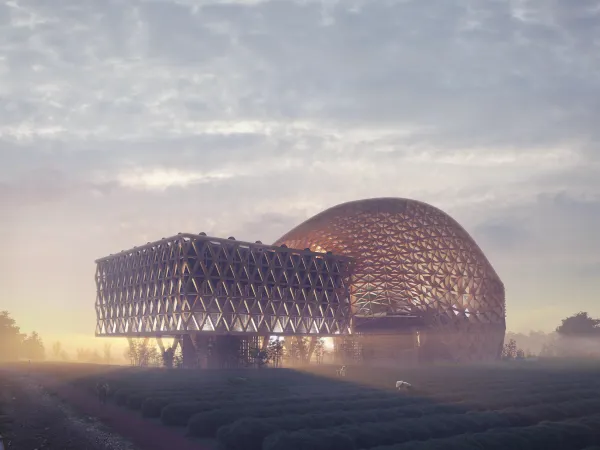
TeAMSpirit's design earned the building the nickname 'The Turtle'
For TeAMSpirit, one of the most pressing challenges was also attempting to merge all the different activities and ideas that the team came up with. "Being such an interdisciplinary team, all of us had exciting ideas on what the building should be, ranging from innovative aquaponic systems to sustainable building materials and circularity systems. The synthesis of all these ideas into a functional concept was challenging but proved itself extremely rewarding by the end of the competition."
Coaches help close the gap
During the Challenge, the teams had to solve a range of important challenges to ensure they were meeting environmental, social and economic sustainability of the project. Fortunately, they got some help from the coaches. "We are a team of 10 students. Even with the best intentions in the world, we would not have been able to answer the key objectives and criteria of the Challenge without the help of the coaches", Gabriel and Olivia tell us. "We were able to talk to people that have been working in the industry for decades, and that confronted the same concern as us during their careers. Incorporating all aspects in the greenhouse was complex, but was made easier with the support of professionals. The coaches were able to steer us in the right direction or provide constructive feedback on new technologies and ideas. For example, coaches made sure our ideas were not premature concepts and were backed up by evidence, which helped a lot with being confident and trusting our ideas."
Kyungchun agrees: "It truly was an amazing experience working with all the coaches. Meetings with them were constant eye-opening moments, and they really helped us to think from a practical perspective. We were also feeling relieved after the meetings, as we got our what-ifs validated by the experts and coaches, which became a huge motivation to power through the 'un-tacted' COVID-19 era."
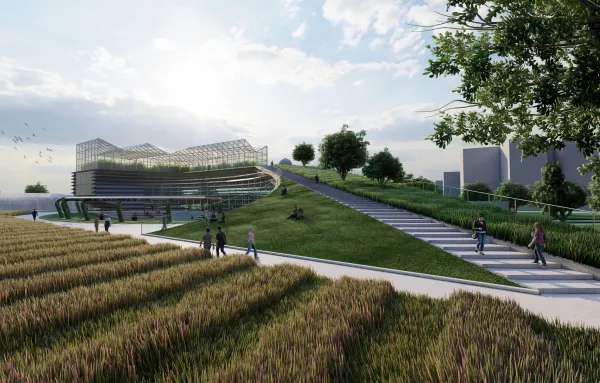
A view of Team KAS' project. The building was developed based on the Lingnan style, and it merges the surrounding landscape and the indoor food production in an attractive way.
Thomas (Zhuzi Ye), another member of Team KAS, adds that "thanks to the powerful social network of WUR, the experts who established contact with us and provided us with advice are all veterans in this industry. They gave very specific and constructive feedback on our proposal. In the meeting with our coaches, they answered our questions generously. Their professional attitude and perspective of thinking made me realize that there is still a gap between what I learned in the 'ivory tower' and the industry's needs. In addition, their enthusiasm for helping us makes us have high hope for this industry."
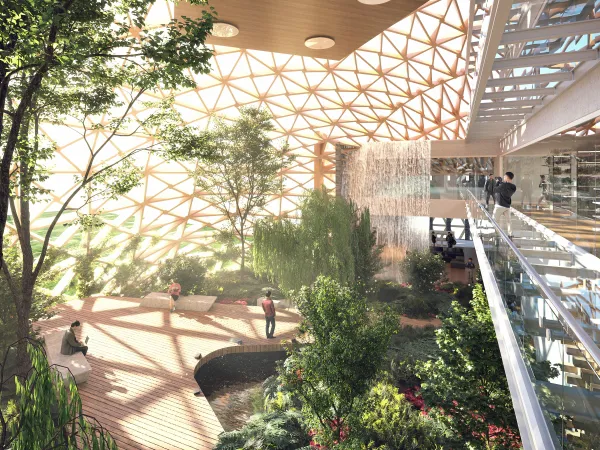
A look inside 'The Turtle' of TeAMSpirit
TeAMSpirit also received a lot of guidance and feedback from the various coaches and experts, as team member Tearlach Barden also says. "Firstly, our team’s coach Alexander Laarman was able to connect us with relevant experts in the myriad of academic fields that were required for the competition. The advice received from the experts allowed us to address the interdisciplinarity of the competition and helped us compartmentalize within our sub teams. For instance, within the plant production sub team, we were able to collaborate with Parus and create an optimized lighting scheme that fit our multi-seasonal greenhouse."
Engaging the community
As the first prize winners, Gabriel and Olivia share that they are super excited about the prospect that Bagua urban greenhouse will be built in the Marina Center Agriculture Park (CAP project), Dongguan, China. They are currently waiting to hear more specific details about the next steps.
When that time comes, The Bagua will not only be a food production plant. It has been designed as a landmark for social integration and diversity, which, Olivia and Gabriel expect, will also entice investors to jump onboard the project.
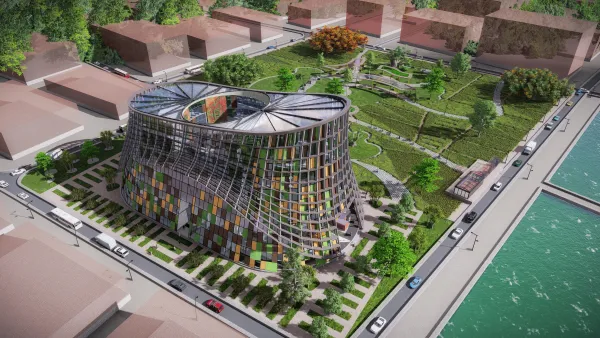
The Bagua urban greenhouse
The project will work with schools to get children and young people to understand where their food comes from and be a part of the Great Food Transformation. "We want people to be enthusiastic about new agricultural solutions, by teaching them important and meaningful skills, and to improve the image of farmers in China, considered lower-class", they explain. This way, Team Bagua aims to bridge the gap between the richer and poorer population in Dongguan.
Through the Bagua game app, they also aim to get the next generation excited about agriculture. The app engages people to understand the challenges farmers face, while being interactive and fun. And through the Bagua Prospective Producers Program, the next generation will be inspired to get involved in agriculture.
Bagua will also have a variety of programs that the local community can get involved in, whether it's cooking classes, a community garden, exercise classes or eating at the 0km restaurant. By bringing food waste to the Bagua or volunteering, consumers are rewarded with points, which they can then use to buy produce in the vegetable and fruit shop - another way to reduce food insecurity and help those most disadvantaged living in Dongguan.
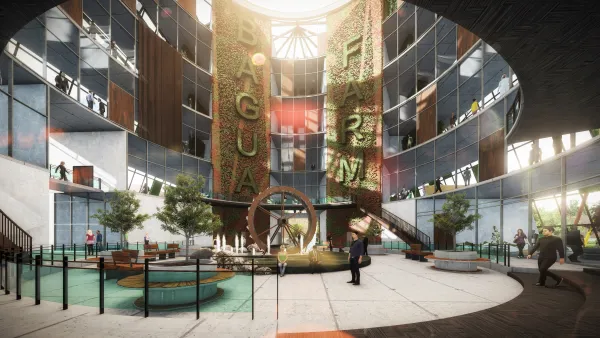
Inside view of Team Bagua's greenhouse
Team KAS also tried to engage the local community in their project, Kyungchun explains: "For instance, we created a membership app, where our members can actively participate in our production system, monitor what we do, and even vote for what we should grow. We also have onsite attractions, where locals can experience cuisines made with our own produce, visit the food production system, and learn more about the new and future farming in our education program."
TeAMspirit went for a reward system not unlike Team Bagua's. Tearlach: "Our ‘Living lab’ connects stakeholders, researchers and the local community together. This collaboration was also done through our ‘Turtle Eggs Currency’: a currency system that encourages the people of Dongguan to provide green waste to the building that can be transformed into biogas and energy. The ‘turtle eggs’ that the people receive from this can be used to receive discounts in other local sustainable businesses."
The future of food production
The project designs for the site in Dongguan could be considered a blueprint for the future of food production. "We need to change the way we do agriculture to have a lower environmental burden", according to Olivia and Gabriel. "Climate change poses significant challenges for the future of growing food and feeding a growing urban population. Food production must change to be more circular, maximising local resources, closing nutrient loops, and minimising external inputs. Through circular economy, we believe it is possible to create a more localised food production system that is profitable, has a low environmental impact and improves livelihoods. Urban farming will not replace field production, but it plays an important role in feeding growing cities more sustainably. We see urban farming and field food production working together to change practices to reduce soil erosion, improve water management, reduce phosphorus and nitrogen water pollution and ultimately reduce the environmental burden of agriculture."
COVID-19 also highlighted the need for local, affordable food production, Olivia and Gabriel argue. That's why they tried to make the greenhouse as closed as possible, so pests would not enter. "We can grow food without pesticides; people are concerned with quality and food safety. With a semi-closed greenhouse we can produce the highest quality, safest food for less money, to make it available not only to richer populations. We didn't just want to make healthy safe food, but make it affordable."
Kyungchun agrees, saying that the future of food production is at risk. "Western countries, such as the Netherlands are very progressive in investing in the future of food production, however, not many countries in the world are. They lack knowledge, skills, resources, and infrastructure. Innovation is very important, but implementation is as important. Therefore, it is critical for our generation to go out to the world and think about the ways to feed the world. This challenge was a stepping stone for me to think of that question in a practical manner, and I am happy to learn through this project that there are many like me."
Thomas adds that there is still a lot of room for future improvement in the food production system. "The market’s demand for the quantity and quality of food is constantly increasing. But the bottleneck of the current industry of food production has been touched for a while. How to adapt the information technologies such as big data, AI, and IOT in food production, and the optimize the energy consumption of food production (such as artificial lighting) would be a foreseeable breakthrough in the near future."
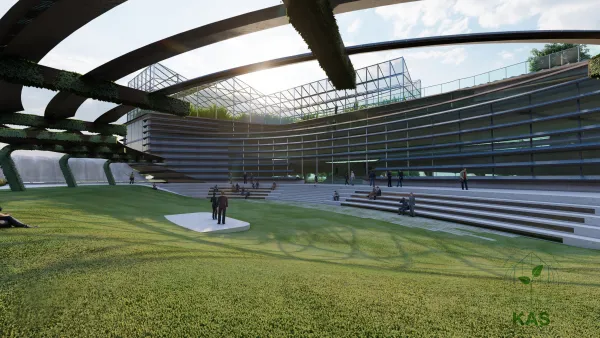
Team KAS concept art
Tearlach also sees the future of food production moving away from centralised corporate supply chains and back into local communities. "While this statement may have seemed outlandish just a few months ago, I hope, and believe, that the recent effects of the COVID-19 pandemic have revealed just how vital a system such as this is today", he says. "Rather than transport our farmed food across vast areas of land, releasing millions of tonnes of carbon dioxide as we do it, perhaps we could introduce small-scale dispersed areas of land dedicated to innovative farming. These could potentially be greenhouses that incorporated reliable agricultural technologies such as vertical farms and aquaponic systems that would maximise the output of food to the communities in the surrounding area. Ideally, these closed systems would help us begin to move away from intense factory farming and closer to an approach that better mimics a natural and balanced ecosystem."
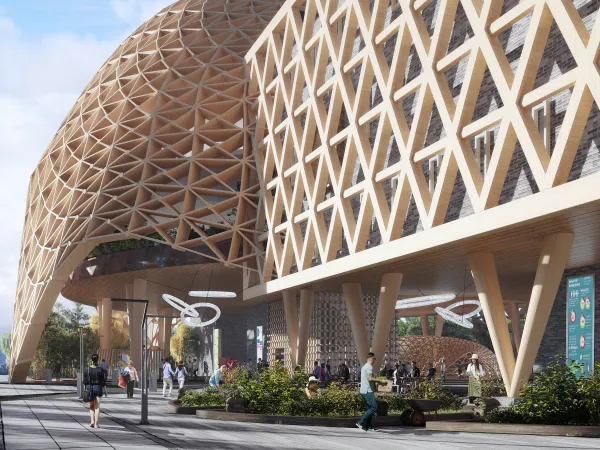
Another view of TeAMSpirit's project
Branching out in the industry
Ultimately, the end of the Urban Greenhouse Challenge'2 is just the beginning for many of the participants. "The project has made us excited about the future opportunities within urban agriculture. Many of us are interested in working for companies that push agriculture to the next level", Olivia shares. She is starting her own farm and is excited to implement key concepts from Bagua into a passive solar greenhouse to grow microgreens.
"We believe that one of the keys to a sustainable and healthy future is to focus on food security and availability in urban areas. We are passionate about this and a few team members would love to be part of such projects in the near future. Please contact team Bagua if you have a project that addresses this and we can provide resumes."
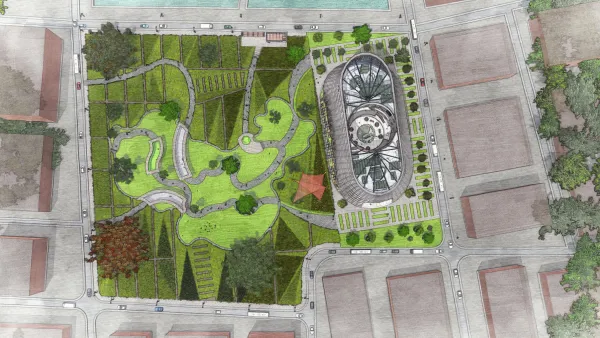
Team Bagua's design incorporates the map of China in the grounds surrounding the building as a community garden
Kyungchun and his team are also working on further developing a few of the ideas from their project. "We really see the value of our creations and we know we can contribute in the future of farming. For me, I am currently working on creating new teams for two different projects. I absolutely loved the energy and the creativity that flew out of this project, and, most importantly, I learned a lot. Hopefully, I can be on another HortiDaily interview, with a different project."
The members of TeaAMSpirit are also eager to branch out in the industry, as Tearlach tells us. "We are currently contemplating our future steps and discussing how the framework of our concept may potentially be applied elsewhere. For instance, the outside space of our building was a space dedicated to low cost reliable farming practices that could be applied more universally than the costly innovative technologies that were a focus in our indoor production. Consequently, it is a personal goal of mine to expand on this idea, and potentially come up with a global framework that encapsulates the reliability of traditional farming with innovative low-cost practices. This could be particularly impactful in impoverished communities if such a framework utilised the knowledge of locals to native plant species as well as provided education on how to implement this knowledge through new technologies."
For more information:
Team Bagua
Gabriel Malaquin
malaquin.gab@gmail.com
Olivia Manzart
oliviamanzart@gmail.com
Team KAS
Kyungchun Kim
kyungchun.kim@wur.nl
TeAMSpirit
Tearlach Barden
tearlachbarden37@gmail.com
www.instagram.com/teamspirit_ug
